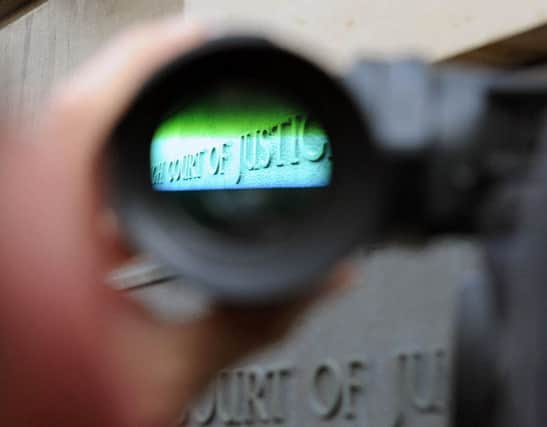Patently a good idea to know the law


IT IS crucial for businesses, whether based in Scotland or the rest of the UK, to ensure they understand what a patent covers, whether they own or license a patent, or instead are faced with a competitor’s patent. This was highlighted by a recent decision issued by the Court of Appeal in a patent infringement case (Smith & Nephew Plc v ConvaTec Technologies Inc).
A patent can be used as a deterrent or tool to prevent competitors from gaining market share. For example, an owner or exclusive licensee of a patent can potentially prevent a competitor from infringing their patent (and also obtain compensation for the competitor’s infringement), thereby locking the competitor out of the market covered by the patent.
Advertisement
Hide AdAdvertisement
Hide AdTurning to the recent Court of Appeal case, ConvaTec – an international medical products company – is the owner of a patent which is concerned with a process for silverising gel-forming fibres used in wound dressings. The other party, Smith & Nephew, wanted to bring to the market a wound dressing using a similar process which potentially infringed ConvaTec’s patent.
ConvaTec’s patent includes a claim with a step which involves subjecting the gel-forming fibres to an agent, such as a chloride salt, which facilitates the binding of the silver to the polymers.
The patent claim states that the agent must be present in a concentration of between 1 and 25 per cent. A key part of the dispute between ConvaTec and Smith & Nephew focused on the meaning of the number “1”. It turns out that the number “1” may not actually mean “1”, but could be interpreted to mean “0.95” or “0.5”.
In a previous High Court case, the Judge found that Smith & Nephew infringed ConvaTec’s patent when running the four experiments in which the concentration of the agent was stated to be 0.96- 0.97% per cent On the face of it, 0.96-0.97 per cent does not fall within the range of 1-25 per cent. However, the experiments were found to infringe the patent because the Judge determined that the patent claim actually covered the range 0.95-25.5%; the experiments seemingly falling within this range.
Smith & Nephew responded to this setback by developing a modified process which they thought would not infringe the patent. This process comprised the steps of the patented method except the concentration of the agent is no more than 0.77 per cent. The Judge concluded the modified process did not infringe the patent because 0.77 per cent does not fall within the range 0.95-25.5 per cent.
ConvaTec appealed the decision made in the High Court case and successfully argued that the range covered by the claim was actually between 0.5 and 25.5 per cent, not 0.95-25.5 per cent. In other words, the patent claim was interpreted as covering a concentration starting at 0.5 per cent, not 1 per cent. Accordingly, Smith & Nephew’s modified process using a concentration of 0.77 per cent would infringe the patent claim.
This Court of Appeal judgment has caused some controversy and it is possible the dispute will proceed up to the Supreme Court where a different judgment may be issued. Nonetheless, both the High Court and Court of Appeal judgments highlight the fact that patent claims can sometimes be interpreted in different ways to what might be expected.
The lesson to take is that with patents, businesses should take precautions before proceeding with any business activity which might be affected by or involve a patent. Whether they own or license a patent, or instead are faced with a competitor’s patent, it is advisable for businesses to seek professional advice before proceeding with their business strategy.
Advertisement
Hide AdAdvertisement
Hide AdFor example, any person or business carrying out an activity for commercial purposes that could be covered by an in-force patent should ensure that they have freedom to operate. In other words, businesses should take steps to make sure they do not or will not infringe any patents that might be relevant to their business activities. Similarly, a patent owner or licensee must ensure that they fully understand what their patent covers and what the patent doesn’t cover, particularly if they discover that a competitor is potentially infringing their patent. In such circumstances, it is highly advisable for the patent owner or licensee to seek professional advice before deciding on a strategy to prevent the competitor from infringing their patent.
• Andrew Rudhall is a registered patent attorney at Marks & Clerk. www.marks-clerk.com